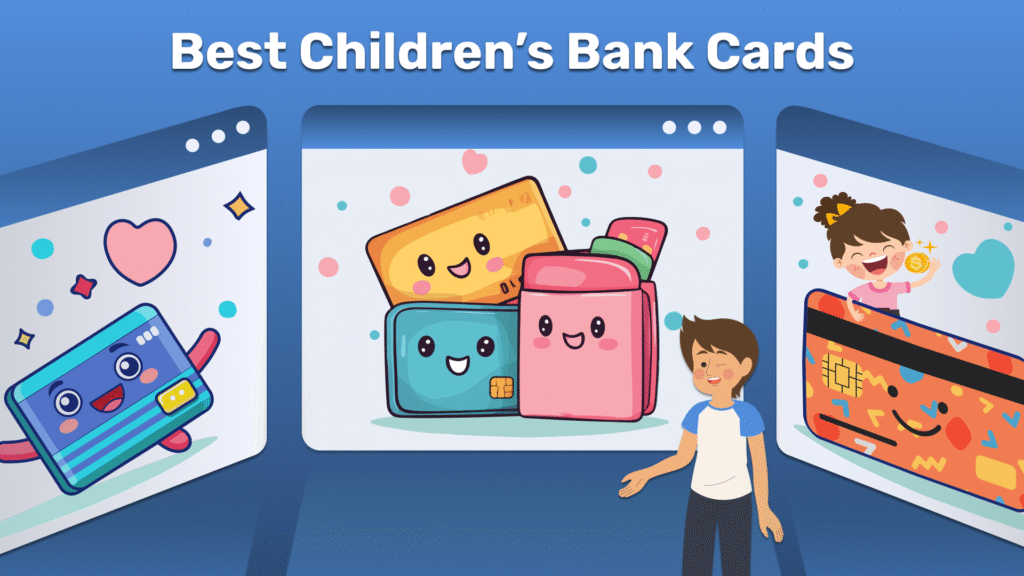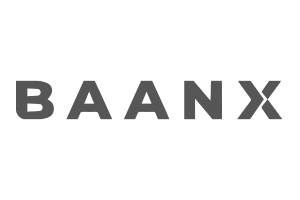Best Children’s Bank Cards

The list of Cards for Kids
GoHenry
| # | Bank | Account Info | Highlights | Rating | Visit |
|---|---|---|---|---|---|
| 1 |

GoHenry (UK 🇬🇧 & EU 🇪🇺)
|
|
|
90
|
Go To Site |
Pros
- Strong parental control features
- Good educational tools for kids
- Easy-to-use app for parents and children
- Supports multiple currencies
Cons
- Monthly fee may be high for some
- No interest or savings feature
- Limited physical locations (online only)
About GoHenry (UK 🇬🇧 & EU 🇪🇺)
GoHenry is a prepaid debit card and financial education app designed specifically for children aged 6 to 18. It empowers kids to learn about money management in a safe environment with parental oversight. Parents can set spending limits, assign chores, and monitor transactions in real time. Available across the UK and many European countries, GoHenry promotes responsible financial habits with easy online account setup and multi-currency support, making it an excellent choice for families seeking a practical and educational children’s banking solution.
Revolut Junior
| # | Bank | Account Info | Highlights | Rating | Visit |
|---|---|---|---|---|---|
| 2 |

Revolut Junior (Europe 🇪🇺)
|
|
|
89
|
Go To Site |
Pros
- Strong integration with Revolut main account
- Parental controls and real-time alerts
- Prepaid Mastercard accepted worldwide
- Financial education features included
Cons
- Requires parent to have Revolut Premium/Metal
- No standalone junior account without parent plan
- Some features vary by country
About Revolut Junior (Europe 🇪🇺)
Revolut Junior is a children’s prepaid Mastercard account designed for kids aged 6 to 17 and managed via the parent’s Revolut app. It provides a safe and secure way for children across Europe to learn money management and budgeting with real-time parental oversight. The account requires a parent to have a Revolut Premium or Metal subscription and offers instant top-ups, spending notifications, and financial education tools. It’s a convenient option for families already using Revolut’s ecosystem, blending ease of use with powerful parental controls.
Osper
| # | Bank | Account Info | Highlights | Rating | Visit |
|---|---|---|---|---|---|
| 3 |

Osper (UK 🇬🇧)
|
|
|
87
|
Go To Site |
Pros
- Strong focus on financial education for kids
- Parental controls with spending limits
- Prepaid Mastercard accepted globally
- Rewards program incentivizes saving
Cons
- Monthly fee may be high for some families
- Only available in the UK
- Limited investment options
About Osper (UK 🇬🇧)
Osper is a prepaid Mastercard account designed specifically for children aged 8 to 18 in the UK. It offers parents robust control features, including spending limits and real-time notifications, while providing kids with tools to learn responsible money management. The platform also includes a rewards program to encourage saving and good financial habits. With a user-friendly app for both kids and parents, Osper makes it easy to manage allowances and top up funds. Though limited to the UK, it’s a solid choice for families wanting to teach financial literacy.
Monzo Junior
| # | Bank | Account Info | Highlights | Rating | Visit |
|---|---|---|---|---|---|
| 4 |

Monzo Junior (UK 🇬🇧)
|
|
|
89
|
Go To Site |
Pros
- Free with Monzo parent account
- Easy parental oversight with notifications
- Encourages good money habits early
- Great app UX for kids and parents
Cons
- Requires a Monzo parent account
- Only available in the UK
- No interest or investment features
About Monzo Junior (UK 🇬🇧)
Monzo Junior is a child-focused prepaid Mastercard account designed for kids aged 6 to 17 and linked to a parent’s Monzo account. It offers easy parental control, real-time spending notifications, and tools for teaching children good financial habits, including saving goals and chore tracking. The account comes with no extra monthly fee but requires the parent to have an active Monzo account. With its intuitive app and worldwide Mastercard acceptance, Monzo Junior is a popular choice for UK families wanting a simple and secure way to manage their children’s money digitally.
Curve Junior
| # | Bank | Account Info | Highlights | Rating | Visit |
|---|---|---|---|---|---|
| 5 |

Curve Junior (Europe 🇪🇺)
|
|
|
87
|
Go To Site |
Pros
- Multi-currency support
- Round-up savings feature
- Parental controls and notifications
- Easy to top-up and manage
Cons
- Monthly fee applies
- Limited to Mastercard acceptance
- Some features only via app
About Curve Junior (Europe 🇪🇺)
Curve Junior is a prepaid Mastercard designed for kids aged 8 to 17 across Europe, providing a smart way for parents to manage allowances and monitor spending. The service includes parental controls, spending limits, chore tracking, and a round-up savings feature to help kids build good money habits. Curve Junior supports multiple currencies and offers real-time notifications for parents, making it an excellent choice for families wanting flexible and transparent digital banking for their children. The account is managed fully through a user-friendly app with seamless top-ups and transfers.
Yolt
| # | Bank | Account Info | Highlights | Rating | Visit |
|---|---|---|---|---|---|
| 6 |

Yolt (Europe 🇪🇺)
|
|
|
85
|
Go To Site |
Pros
- Completely free to use
- Robust budgeting and savings tools
- Parental controls and monitoring
- Multi-currency support
Cons
- Limited physical card availability in some countries
- App-only access for most features
- Spending limits may be restrictive for teens
About Yolt (Europe 🇪🇺)
Yolt is a free prepaid Mastercard account aimed at children 8 years and older across Europe. It provides parents with an easy way to manage allowances, track spending, and teach financial responsibility through an intuitive app. Yolt offers budgeting tools, saving goals, and real-time notifications to promote financial literacy in kids. With support for multiple currencies and no monthly fees, Yolt is a flexible and accessible option for families seeking a modern digital banking solution for their children.
Baanx Kids
| # | Bank | Account Info | Highlights | Rating | Visit |
|---|---|---|---|---|---|
| 7 |

Baanx Kids (Europe 🇪🇺)
|
|
|
83
|
Go To Site |
Pros
- Free account with no monthly fees
- Cryptocurrency options for kids
- Strong parental control features
- Rewards system motivates saving
Cons
- Crypto features may not suit all parents
- Limited physical card availability
- Smaller user base than larger neobanks
About Baanx Kids (Europe 🇪🇺)
Baanx Kids offers a modern prepaid Mastercard account designed for children aged 6 to 17 across Europe. With no monthly fees and innovative features like cryptocurrency options, Baanx combines traditional banking with digital assets to educate kids about finance. The app provides parents with flexible controls, spending limits, and instant notifications, alongside rewards programs to encourage good saving habits. This account suits families looking for a tech-forward approach to managing children’s money.
Step
| # | Bank | Account Info | Highlights | Rating | Visit |
|---|---|---|---|---|---|
| 8 |

Step (Europe 🇪🇺)
|
|
|
85
|
Go To Site |
Pros
- Free account with no hidden fees
- Parental controls and instant notifications
- Cashback and rewards on purchases
- Easy online setup and management
Cons
- Available only in select European countries
- No cryptocurrency or investment options
- Limited physical branch support
About Step (Europe 🇪🇺)
Step offers a prepaid Visa debit card and money management app designed for children and teens aged 8 to 18 in select European countries. With no monthly fees and strong parental controls, Step helps families teach financial responsibility through real-time notifications, spending limits, and rewards. Early direct deposit access and cashback features make it attractive for teenagers managing their own money. The account is easily opened online, although availability is currently limited in Europe.
RoosterMoney
| # | Bank | Account Info | Highlights | Rating | Visit |
|---|---|---|---|---|---|
| 9 |

RoosterMoney (UK & Europe 🇬🇧🇪🇺)
|
|
|
88
|
Go To Site |
Pros
- Excellent allowance and chore tracking features
- Encourages saving habits and goal setting
- Parental oversight with easy controls
- Available physical prepaid card option
Cons
- Some features locked behind premium plans
- Prepaid card availability varies by region
- Not a full bank account but a financial app
About RoosterMoney (UK & Europe 🇬🇧🇪🇺)
RoosterMoney is a popular allowance and financial education app designed for children aged 5 to 18, available in the UK and parts of Europe. It offers digital and physical prepaid debit card options, combined with robust parental controls to manage allowances, chores, and savings goals. With free and premium plans, RoosterMoney is ideal for families looking to teach kids financial responsibility through interactive tools and real-world money management.
Squirrel
| # | Bank | Account Info | Highlights | Rating | Visit |
|---|---|---|---|---|---|
| 10 |

Squirrel (UK 🇬🇧)
|
|
|
85
|
Go To Site |
Pros
- Great for teaching budgeting and financial literacy
- Parental controls with real-time notifications
- Rewards system motivates kids to save
- Easy to set up and manage allowances
Cons
- Monthly fees may be high for some families
- Limited availability outside the UK
- No investment features included
About Squirrel (UK 🇬🇧)
Squirrel is a UK-based prepaid debit card and pocket money app designed for children aged 7 to 17. It offers a comprehensive system for parents to manage allowances, monitor spending, and encourage saving through rewards and goal setting. With real-time notifications and strong parental controls, Squirrel provides a safe and educational financial experience for families. The service is fully online and supports easy account setup.
